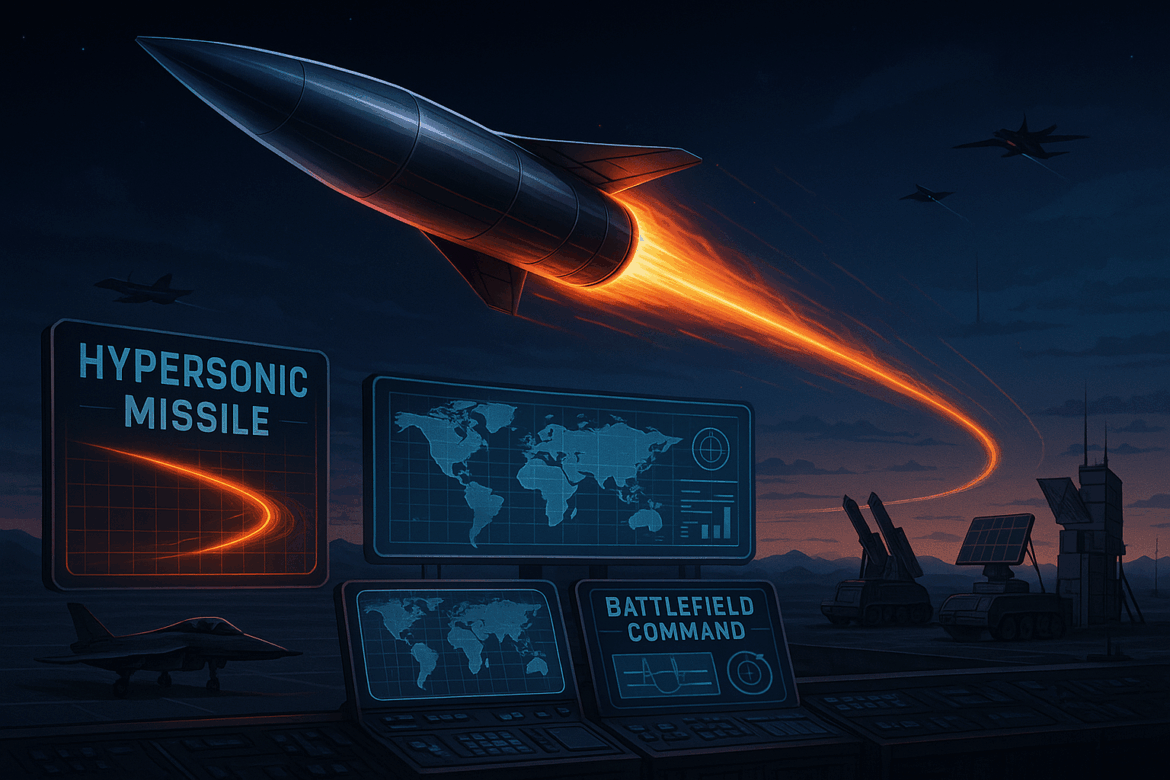In our modern era, tech advances —quite . Hypersonic technology stands out as one of the most groundbreaking developments to revolutionize the defense sector. This powerful innovation enables aircraft and weapons to reach speeds once thought unattainable making them quicker more intelligent, and deadlier than ever before.
Let’s explore hypersonic technology, its mechanisms, and its role in reshaping defense strategies.
What’s the Meaning of “Hypersonic”?
The term hypersonic describes anything that moves at five times the speed of sound or faster—that’s over 6,000 km/h! To put this in perspective, a hypersonic missile could traverse an entire nation in mere minutes.
But hypersonic technology is about more than just speed. It has an impact on creating tools and weapons that move so and unpredictably that they’re impossible to stop.
How Does Hypersonic Technology Work?
Hypersonic vehicles need special materials, engines, and designs to handle the extreme heat and pressure that happens at such high speeds. Two common types of hypersonic weapons under development include:
- Hypersonic Glide Vehicles (HGVs): Rockets launch these vehicles, which then glide at hypersonic speed to their target.
- Hypersonic Cruise Missiles (HCMs): These missiles have engines that keep them flying fast through the atmosphere using a scramjet.
Both types aim to be quick, agile, and unpredictable making them tough to spot and almost impossible to stop.
Why Does Hypersonic Tech Matter in Defense?
Hypersonic technology could change military planning and action. Here’s why:
🚀 Unbeatable Speed
Regular missiles need time to hit their targets. Hypersonic weapons can strike almost right away—giving enemies little chance to respond.
🧭 Hard to Predict
Unlike standard missiles that follow a set course hypersonic weapons can shift course mid-flight making them tough to track or stop.
🎯 Precision Attack Capability
Engineers design these weapons to hit targets with great accuracy even at very high speeds.
🛡️ Challenging to Defend Against
Most defense systems today just can’t keep up with hypersonic threats. This causes big worries for world security.
Who’s Working on Hypersonic Weapons?
Many nations are competing to create hypersonic systems. Key contenders include:
- United States
- China
- Russia
- India
These countries are looking into ways to use hypersonic weapons and protect against them—starting a new age of fast-paced military planning.
What Engineering Hurdles Exist?
While the rewards are massive making hypersonic systems is difficult. Some main problems engineers must solve include:
🔥 Managing Extreme Heat
Hypersonic speeds create intense heat for vehicles. Creating materials that can endure and work in these conditions poses a big challenge.
💸 Steep Costs
Building and testing hypersonic technology costs billions. This isn’t something just anyone can make.
🧠 Complex Controls
Keeping a hypersonic weapon stable and accurate at such high speeds proves challenging.
The Risks and Global Concerns
As with any new defense technology one this powerful, people worry about:
- Arms Race: More countries hurrying to build hypersonic weapons might cause global tension.
- Lack of Regulation: Few international rules exist about how to use these weapons.
- Escalation Risk: The speed and unpredictability of hypersonic weapons could cause misunderstandings or conflict.
The Future of Hypersonic Defense
We’re just starting out in the hypersonic age. In the coming ten years, we can expect to see:
- More cutting-edge hypersonic weapons
- Better systems to detect and track
- Studies on ways to defend (such as laser interceptors or tracking from space)
Governments, militaries, and defense firms are putting a lot of money into making these systems cleverer less risky, and more dependable.
